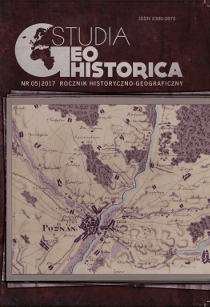
We kindly inform you that, as long as the subject affiliation of our 300.000+ articles is in progress, you might get unsufficient or no results on your third level or second level search. In this case, please broaden your search criteria.

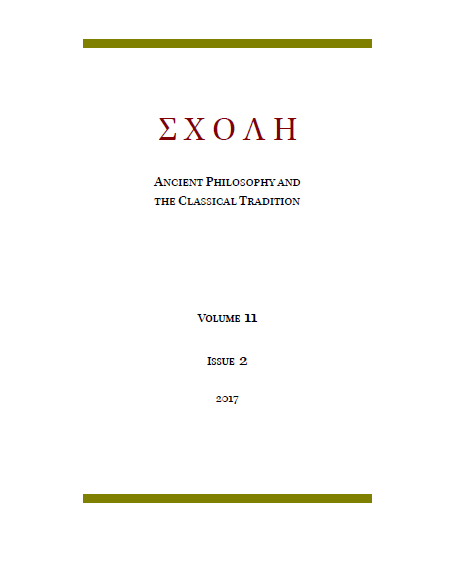
The article is devoted to reception of ancient toponyms and geographical images in medieval Islamic geography. This question is discussed on the example of the geographical work of al-Idrīsī (the middle of the 12th century), who widely used ancient mythopoetical and geographical images to describe the remote regions of the world. Al-Idrīsī’s report about the so called “Russian river”, the Qūqāyā mountain and the people called an-n.bāriyya, whose identification is still unclear, is considered in this paper. The analysis of the composition of the report about the Qūqāyā mountain allowed to compare it with the popular ancient image of Riphean mountains, which was closely tied to the name of the Hyperboraens and the Tanais (Don) river flowing from this mountains to the Black Sea. The correspondence between the ancient image of Riphean mountains with the Tanais river, on the one hand, and the description of the Qūqāyā mountain with the “Russian river” — on the other, was found. This led to the conclusion that ethnotoponym an-n.bāriyya was also linked to ancient geography and was a distorted Arabic version of the “Hyperboreans”. At the same time the information about the northern cities of Eastern Europe available to al-Idrīsī allowed him to fill the ancient geographical images with new data.
More...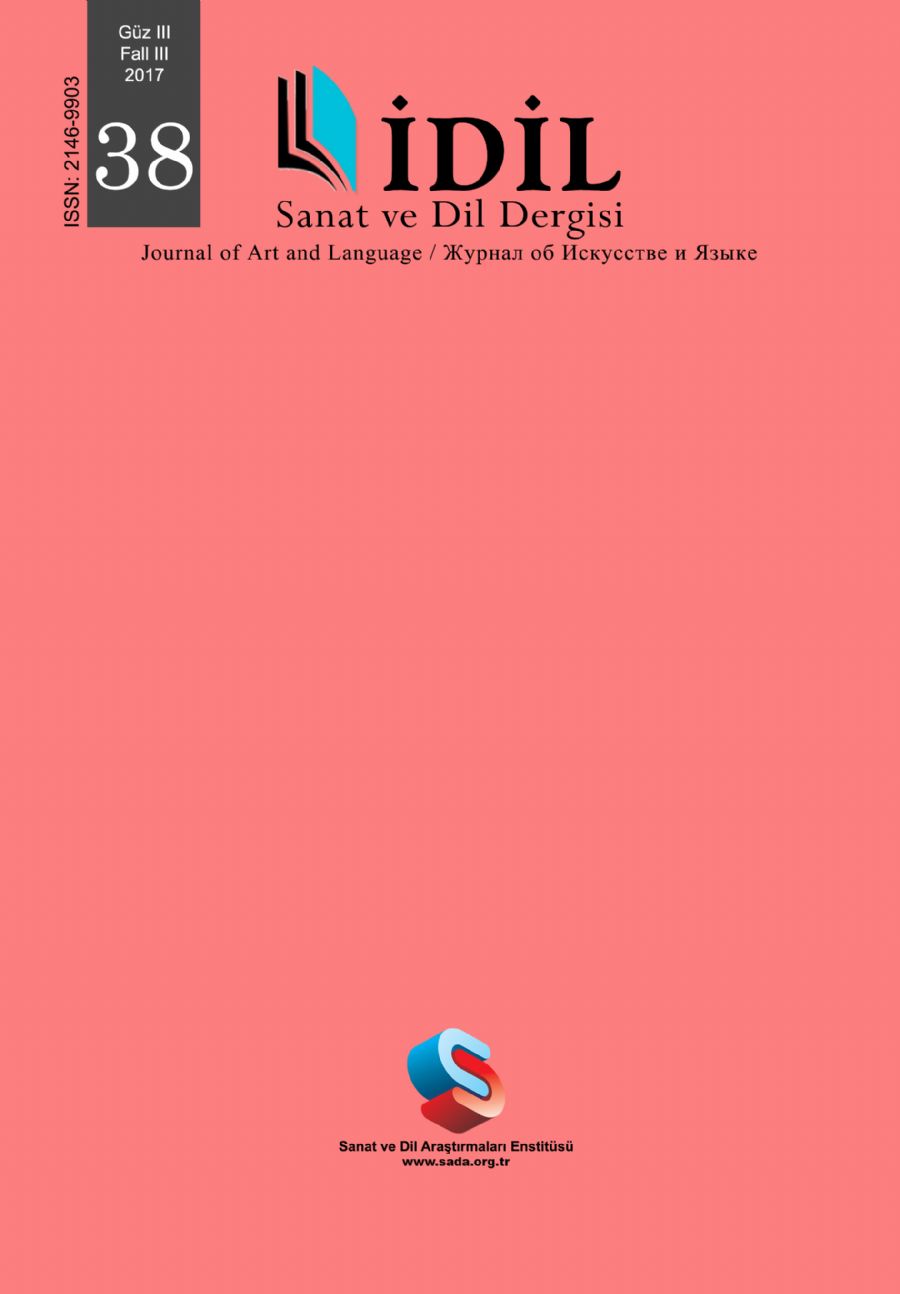
In this paper, first, I intend to analyze the cognitive metaphors associated with Amerigo Vespucci’s letters in Italian and the traces of environmental devastation: “Indians Are Gold,” “Animals Are Health,” “Oceans are Slaves,” and “Nature is a Physician” are some of the cognitive metaphors present in Amerigo Vespucci’s letters that are present in this book: Vespucci, Amerigo. Cronache Epistolari: Lettere 1476- 1508. Compiled by: Perini, Leandro. 2013. Florence: Firenze University Press. Second, the letters of Amerigo Vespucci will be investigated in accordance with the following: 1) Amerigo Vespucci’s traditional nature love: Judeo-Christian views on nature and Saint Thomas; 2) commercial traces of nature devastation in Amerigo Vespucci, such as researches for gold and commercial ways; and 3) scientific aspects of nature in Amerigo Vespucci. In addition to these, third, the metaphors underlying the games played by children through natural objects in Turkey, Israel, Italy, and England will be analyzed and compared, and a peace education theory based on ecocriticism will be proposed.
More...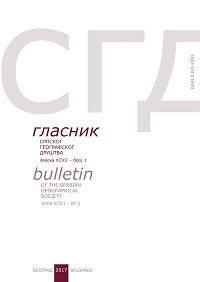
Cartography is a science, technique and art. Cartography is organization and communication of geographical connected information in graphical and digital forms. That can include all conditions of data prepared for presentation and usage. Cartography in the contemporary society is a system of diverse manifestation forms dominated by making and using traditional and virtual cartosemiotic models of reality and fiction. Cartography is dynamic science, which developing its disciplines according to demands of modern theory and needs of practical sciences, often tacking and overlaying with their researching fields. On that way there are becoming new disciplines (bridges between sciences), which not leading to new differentiation but their integrations. That new disciplines are: Cartoinformatics (geoinformation cartography), Geoicons and Geoimage.
More...
In this paper is shown an attempt of creating annual isothermal map of Eastern Serbia in conditions where appropriate number of stations is not available, especially on the higher altitudes. According to the natural boundaries are formed 15 regions, with profiles that consist from one lower and one higher station. Because of area dimension it was necessary to use as referent points like some mountain picks for which temperatures were created projections according to the distant profiles. Comparing results of temperature gradients with same results obtained by regression analyses, we can make a conclusion that our method has validity in the sense of more precise prognosis of temperature for the smaller areas.
More...
By using the database that is based on grid system of 1 km2 from Laboratory of physical geography, few quantitative maps have been made. Their researching and analyzing can show global relations on Serbian territory. Their importance overcomes geomorphologic needs, because they could be used for spatial planning, economic needs and environment protection.
More...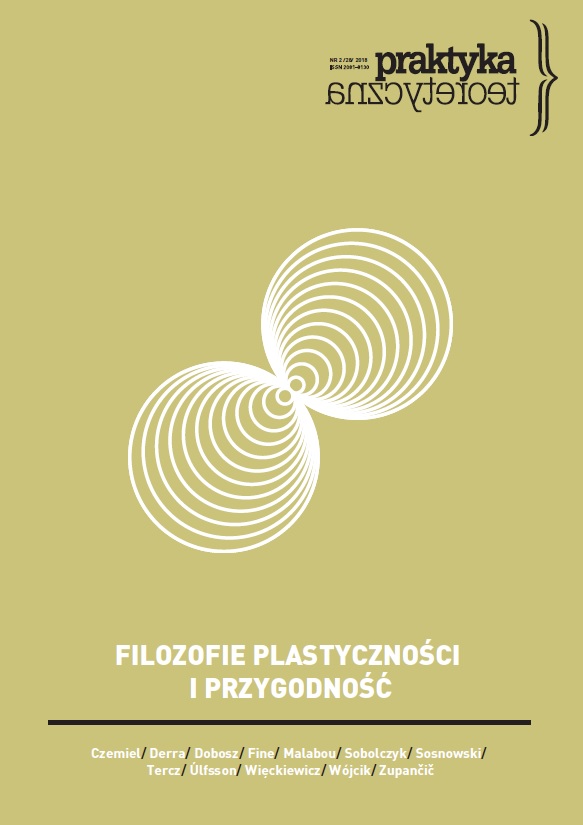
This article analyses the theme of map and territory in Catherine Malabou’s philosophy and in contemporary poetry. Calling into question the traditional understanding of the tension between map and territory, Malabou emphasizes that no map can entirely distance itself from territory, as in the case of the brain’s development in contact with the environment. Malabou employs cartographic ideas to clarify her own concepts of “plasticity” and “brain-world cartographies” that account for how the environment shapes us, at the same time indicating how we may partake in this process. Viewing selected works by Elizabeth Bishop and Nigel Forde in this perspective, which is demonstrated to dovetail with ecopoetics, this article explores how poetry can offer tools necessary for developing better ecologies of the mind. This is particularly urgent given the ongoing ecological crises as well as ethical challenges entailed by the advent of the Anthropocene and the scaling up of global capitalism.
More...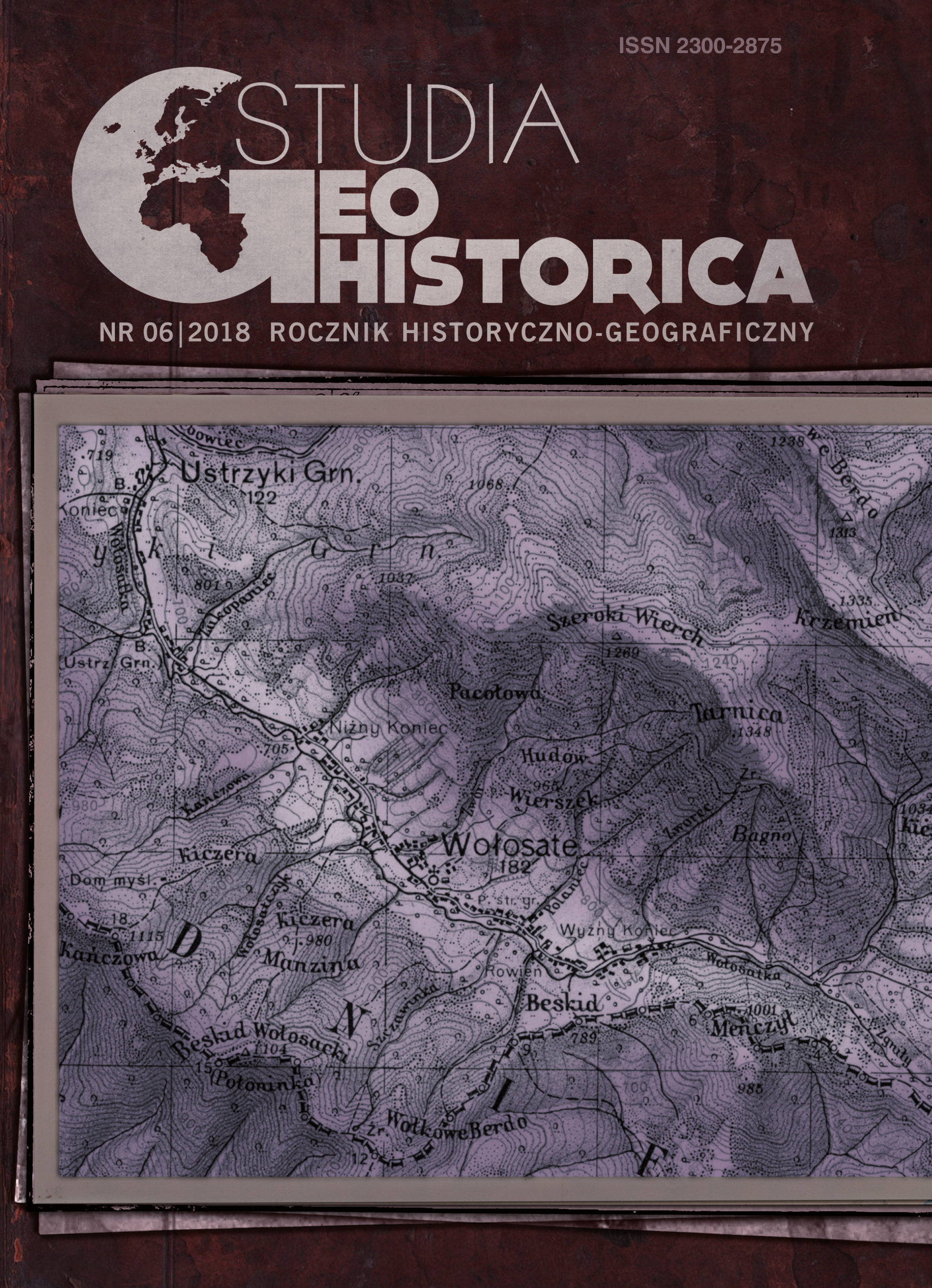
Historical thematic cartography devoted to confessional or, in yet broader terms, religious problematic enjoys a stable status in Poland. Religious issues have usually been treated in a two-fold way: 1. as the major subject of historical cartography, 2. as a component of historical cartography concerned with socio-cultural or historical-political problematic. The former embraces the tradition of the Centre for Research on (earlier Institute of ) Historical Geography of the Church in Poland (Catholic University of Lublin), whereas the latter – the works of the Historical Atlas of Poland (Institute of History of the Polish Academy of Sciences). Even though the Polish-Lithuanian Commonwealth was a multi-religious and multi-confessional country (including both Christian and non-Christian faiths), the majority of hitherto cartographic studies was predominantly preoccupied with institutions, peoples and religious practices of the Latin Church, which enjoyed a preferential systemic and socio-economic status in the Commonwealth. For decades, Polish historical cartography focused on the reconstruction of territorial structures and multi-level administrative divisions. The meticulousness and methodology of these approaches varied greatly, ranging from small-scale schematic maps of dioceses, to very detailed inventory maps of parochial borders (the “Historical Atlas of Poland” series). Its thematic development Polish cartography of confessions owes to professor Jerzy Kłoczowski who made the geographical- historical method one of the pillars of studies into socio-religious history, strongly influenced by the French “Annales” school. The Centre for Research on Historical Geography of the Church in Poland at the Catholic University of Lublin is the only scientific institution in Poland whose research profile and methodology focus on geography and historical cartography of religions and confessions. The vast cartographic material collected over many decades forestalled a full development of cartographic research methodology and the subsequent evolution from cartographic presentation to analysis and interpretation, which had been advocated by Kłoczowski already in the 1960s. The introduction of innovative technological devices to geographical-historical research, specifically databases and systems of spatial information, have opened anew the discussion on the opportunities for integrating data with methods of their analysis. Through its connection to other layers of the landscape of the past historical geography of confessions and religions is now becoming a crucial element of spatial history. Importantly, its inclusive and interdisciplinary character tallies well with the programme formulated by Le Bras and Kłoczowski, within the framework of which institutions, peoples and religious practices should be presented alongside other elements of social, economic and cultural life. Only this may facilitate a proper assessment and description (both quantitative and qualitative) of religious practices, helping to properly interpret factors which have influenced the development of religious institutions and practices.
More...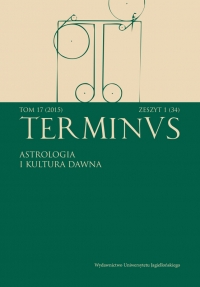
The paper consists of two parts. The first presents a detailed description of eight maps and the views of cities included in The Atlas of the Principality of Polotsk by Polish cartographer Stanisław Pachołowiecki. They were printed in Rome in the printing house of Giovanni Battista Cavalieri in 1580. The author describes the whole cycle including both states of the plan of the Siege of Polotsk in 1579 and lists all copies known today. The second part discusses the art featured in these maps, particularly the map of the Principality of Polotsk.
More...
This paper contains a transcription (modernized according to the norms set out by Academia Latinitati Fovendae) and a Polish translation of titles, inscriptions and Latin explanations, from eight cartographic relics that constitute The Atlas of the Principality of Polotsk, of Stanisław Pachołowiecki (1580).
More...
The paper analyses a cartographic work of Stanisław Pachołowiecki printed in Rome in 1580 entitled Descriptio Ducatus Polocensis. The author focuses on the origins of the manuscript version of the map and its usefulness in military operations. The analysis indicates that the map was created on the basis of previously gathered cartographic draft s, itineraries, and knowledge possessed by the commanders active on the territory of the Principality of Polotsk. Stanisław Pachołowiecki developed the map as early as in the 1st half of 1579 and it became the basis for strategic and operational activities undertaken during the military council in Svir. The map of the Principality of Polotsk depicts changes that may be described as the “early-modern cartographic turn”. In the second half of the 16th century, Polish and Lithuanian commanders began to plan and prepare military operations using a map. Thus the management of space on a strategic level commenced, which affected the development of operational planning.
More...
The aim of this paper is to make an experimental application of textual criticism (the stemma method or Lachmann’s method) in the analyses of early-modern maps. It is supposed to verify whether, and to what extent, the means developed by philologists to establish how texts were transmitted in medieval codices, can be applied to study the transmission of geographic knowledge on early-modern maps. The author postulates that well-tried procedures should be used in studies of textual parts of old maps. They allow the formulation of filiation hypotheses. These procedures consist of collating extant texts and detecting mistakes that indicate, connect or divide individual branches of tradition. The subject analysed is the toponymy appearing on the map Decriptio Ducatus Polocensis (The Description of the Principality of Polotsk) by Stanisław Pachołowiecki, engraved in Rome by Giovanni Battista Cavalieri in 1580 and on maps stemming from the same archetype. The author compiles a complete index of toponyms and hydronyms in transliteration and transcription, identifies them and provides the names in Belarussian, Russian and Polish.
More...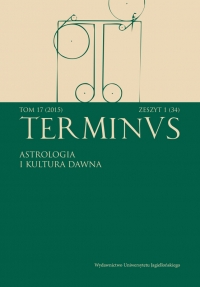
The paper’s objective is to demonstrate: a) Stanisław Pachołowiecki’s Atlas Księstwa Połockiego (Rome 1580) as the first part of a major propaganda action conducted by the royal chancellery; b) the course of its publication; c) who was engaged in its production. At first, the author reminds that Atlas was made during the Livonian War. The main commissioners were King Stephen Báthory and Chancellor Jan Zamoyski. The next part presents the chief propagandistic text created by the Polish chancellery, Edictum regium de supplicationibus, printed in Polatsk in early September 1579. It is an account of the circumstances of the capture of the city by Stephen Báthory’s army. The author reviews the text’s distribution and translation into English among other languages. It turns out that Edictum, issued several times in 1579, provides the most significant context for the Atlas.
More...
The paper presents the oldest instances of applying cartography during strategic actions in the Crown and the Grand Duchy of Lithuania. The promoters and – possibly – also the proponents of using maps in the army were Stanisław Łaski and Jan Tarnowski. Tarnowski not only wrote about the need for the application of cartographic knowledge by the high command, but also modified permanent defence according to the spatial reconnaissance of Tartar routs. They were to be supervised by a specifically appointed Field Crown Guardian. The oldest map used during the defence was Bernard Wapowski’s map of Sarmatia from 1526. It contained a black trail that was the chief route of the Tartar army march. In 1576, a precise rout consisting of three trails used by the Crimean Khanate was made by a committee appointed to lustrate the royal demesne of the Podolian and Ruthenian voivodeships.
More...
As per the 16th and 17th centuries, operational activities should be understood as military activities conducted by independent groups (usually regiments). They may also be termed the art of manoeuvre. One may place them between strategic decisions and specific tactic actions related to fighting a battle or conducting a siege. The first mid-16th-century theoreticians to have observed the importance of this art were Albrecht Hohenzollern and Andrzej Frycz Modrzewski. Some 16th-cenutry authors (e.g. Jan Tarnowski, Albrecht Hohenzollern, Marcin Bielski) concordantly postulated the introduction of a preceding manoeuvre action that would last one day. This assumption survived until the early 18th century.
More...
In this paper, the author analyses cartographic activities that directly affected the course of an armed confl ict. Classic instances of such activities include the production of documents for the purposes of a siege or the preparation of an army for a battle, as well as plans of setting a military camp or the upbuilding of defence fortifications in a city or a fortress. The author analyses them in the chronological order, beginning with the earliest mentions concerning the use of maps in tactic actions until 1576. Th e fi rst theoretician to have connected cartographic activity with military tactics was Szymon Marycjusz of Pilzno. He presented his theses in a work entitled De scholis seu academiis libri duo printed in 1551. The evidence collected indicates that in the first half of the 16th century people did not know how to use cartography for tactical military purposes. Military large scale cartography had different methodological rudiments than medium scale or small scale maps. The fundamental methodological assumption in the creation of plans consisted in leaving the pictorial manner (of landscape topographic accounts) for the sake of making a circuit around the area drawn.
More...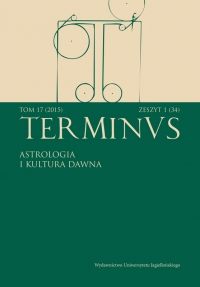
The siege of Polatsk is not the first example of the application of cartographic plans in siege operations conducted by the Crown or Lithuanian armies. We should mention the capture of Uła in 1568 or the battle at Latarnia in 1577. Undoubtedly, however, the situation in 1579 is a model material demonstrating the use of cartography for siege purposes at the turn of the 16th and 17th centuries. At first, before launching military camps, the high command meticulously analysed the fortifications. The pictorial, or landscape, manner was not in use any more – the whole establishment was ridden around once or twice. Thus gathered information was captured on paper and, during the first council of war, constituted the basis for developing the tactics of conquering the fortress.
More...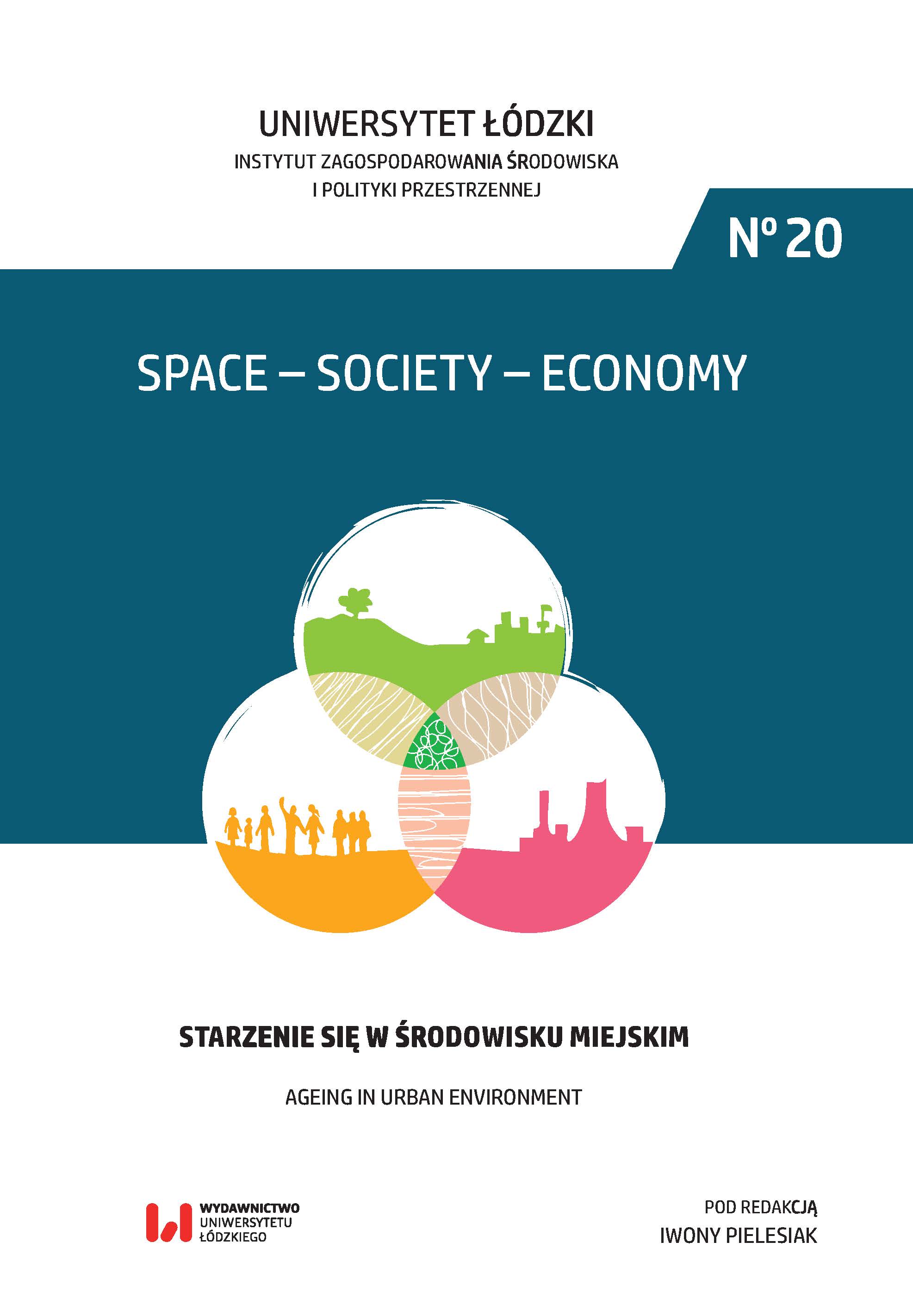
This study focuses on the spatial diversity of the shapes of land lots in metropolitan conditions viewed through the example of Łódź. The researchers placed particular attention on the diversity and compact of lot shapes. This issue was preceded by a brief discussion of the distribution, density and sizes of lots. The goal of the study was to assess the spatial variability of lots according to their shapes using GIS tools. // W artykule położono nacisk na zróżnicowanie przestrzenne kształtu działek gruntowych w przestrzeni metropolitalnej na przykładzie Łodzi. Szczególną uwagę autorzy zwrócili na zróżnicowanie i zwartość kształtu działek. We wstępnej części pracy poddano analizie rozmieszczenie, gęstość i wielkość działek. Głównym celem pracy jest identyfikacja zróżnicowania przestrzennego kształtu działek przy użyciu narzędzi GIS.
More...
Along with the development of technology and changes in the needs of current map users, digital maps available on the Internet start to play a significant role. Such maps become an attractive tourist product of many regions. The article was aimed at investigating the use of digital tourist maps in rural areas of Łódź Voivodeship. An attempt was made to analyze such maps of communes of Łódź Voivodeship which are available on the Internet. The nationwide, provincial and local websites have been characterized. Both functionality and content of all interactive tourist maps were discussed. Maps of communes presented on their own websites were analyzed in detail, and the results of the query were shown on the maps. Apart from interactive tourist maps offered by nationwide and provincial websites, only 2 percent of all communes in Łódź Voivodeship share such maps on their websites. Other digital maps: tourist as well as all remaining ones presented on the websites of these communes are also not very popular, since only every third rural commune possesses them. What is an important issue is also the quantity and quality of data presented on these maps, which are few and most of which need updating and extending. // Wraz z postępem technologicznym i zmianami potrzeb obecnych użytkowników map duże znaczenie zaczynają odgrywać cyfrowe mapy umieszczane w Internecie. Tego typu mapy stają się atrakcyjnym produktem turystycznym wielu regionów. Artykuł miał na celu sprawdzenie wykorzystania cyfrowych map turystycznych na terenach wiejskich województwa łódzkiego. Została podjęta próba analizy cyfrowych map turystycznych gmin wiejskich województwa łódzkiego umieszczonych w Internecie. Scharakteryzowano serwisy o zasięgu ogólnopolskim, wojewódzkim oraz lokalnym. Szczegółowo zbadano mapy gmin umieszczone na ich własnych stronach internetowych, a wyniki kwerendy przedstawiono na mapach.
More...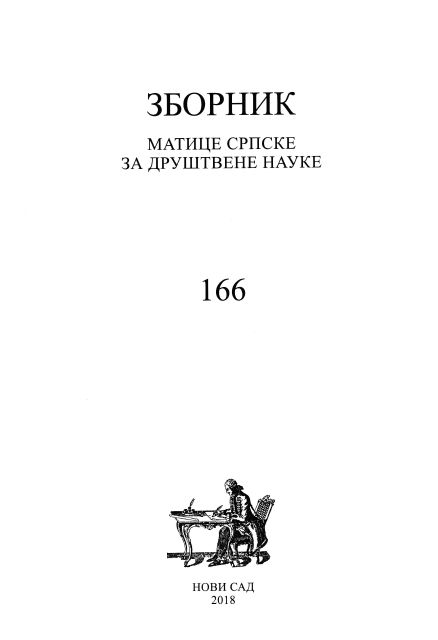
Amenities are recognized as a new source of comparative advantage of rural areas, which is strategically used for the popularization of the reverse migration flow from urban to rural areas, as well as for enforcing a new development approach defined as the “rural industrialization”. Climate conditions, topography, forest land and water resources have been identified as the main drivers of the migration flow from urban to rural areas. Additionally, they are highly related to economic growth in rural areas with high natural amenities. The current paper has two aims. The first is to highlight the importance of the concept of rural amenities for economic development, with special em phasis on the natural amenities. The second aim is to describe the concept of natural amenities on the example of rural areas in Serbia by introducing a set of measures of natural amenities, as well as a summary natural amenity index which allows the classification of the rural areas in Serbia with respect to their natural amenities. Natural amenities have a significant influence on the total amenity value of rural areas in Serbia. There are significant differences in climate conditions and landscape amenities among rural areas. The mapping of rural Serbia ac cording to the developed index of natural amenities is only the first necessary step in creating an efficient rural policy for the purpose of ensuring sustainable rural development in the future. Rural areas with high natural amenities in Serbia include Raška, Zlatibor, Moravica, Pčinja, Bor and Toplica.
More...